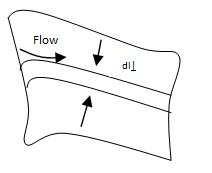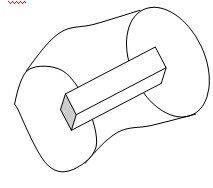Current Density
Current Density Assignment Help | Current Density Homework Help
Current density
Consider a line charge λ travelling down a wire at speed v. A segment of length vΔt, carrying charge λvΔt, passes by point A in a time interval ∇t. The current in a wire is the charge per unit time passing a given point.I = dq/dt = λv Δt/Δt = λv … (1)
The magnetic force on a segment of current-carrying wire is
Fmag = ∫(λdl)(v x B = ∫ (I x B) dl … (2)
Since I and d I both point in the same direction,
Fmag = ∫ I(d I x B) … (3)

Surface Current Density. If, for some reason, the moving charges can be thought of as being constrained to flow on a surface, we can define a surface current density K. Its direction of flow of charge and its magnitude K is defined as equal to the current per unit length through a line lying in the surface and unit length through a line lying in the surface and oriented perpendicular to the flow. Consider a “ribbon” of infinitesimal width dl |, running parallel to the flow. Let the current in the ribbon be dI.
. : F = dI/dl |
Let the surface charge density be σ and its velocity be v.
The net line charge on the ribbon = σ dl|
dI = (σ dl|)v.
. : K = σv … (5)
The magnetic force on a surface current is
Fmag = ∫(σ da)(v x B) = ∫(K x B)da … (6)

Volume Current Density (J). When the flow of charge is distributed throughout a three-dimensial region, we describe it by the volume current density J. Its direction is that of the direction of flow of charge and its magnitude J is given by the current per unit area through an area set perpendicular to the flow. Consider a “tube” of infinitesimal cross section da|, running parallel to the flow. Let the current in this tube be dI. Then
J = dI/da| … (7)
Let the volume charge density be ρ,
Let the velocity of the moving charges be v. Then,
J = ρv … (8)
The magnetic force on a volume current is
Fmag = ∫(ρ da)(v x B) = ∫(J x B) dτ … (9)

For more help in Current density please click the button below to submit your homework assignment